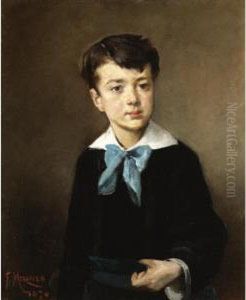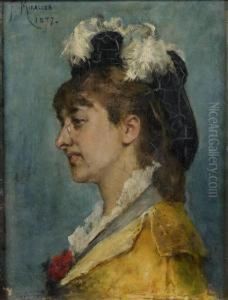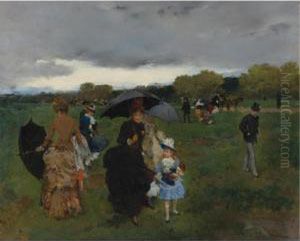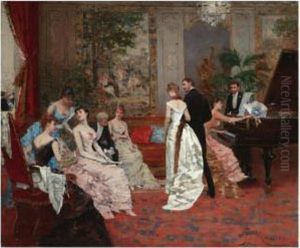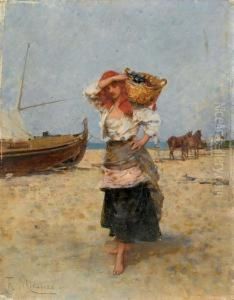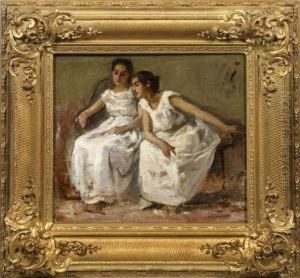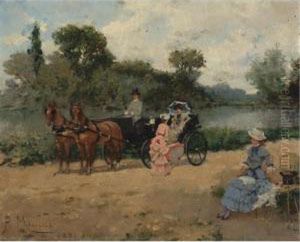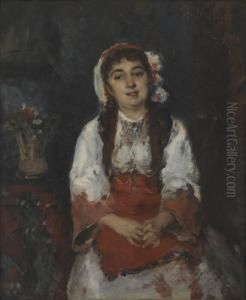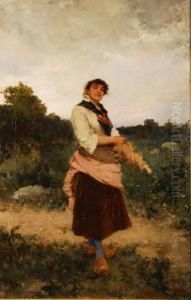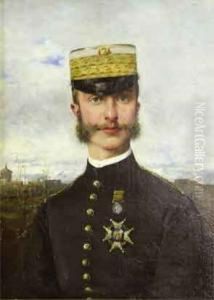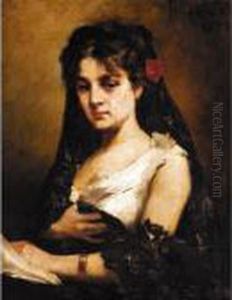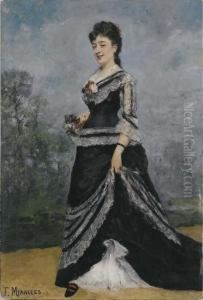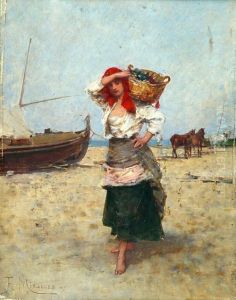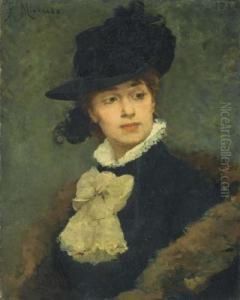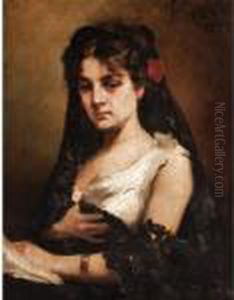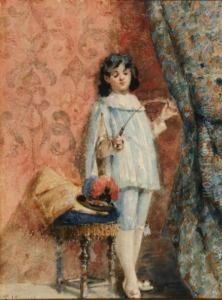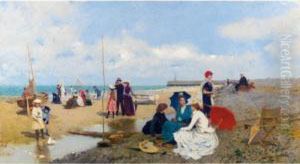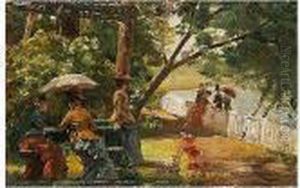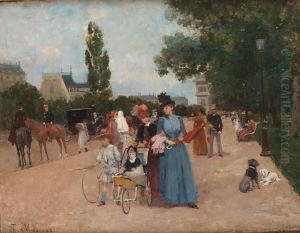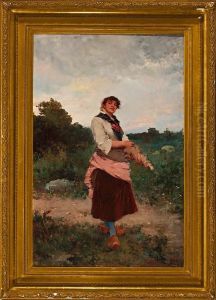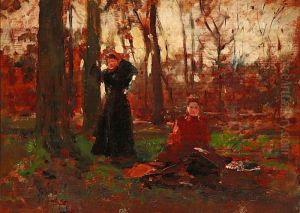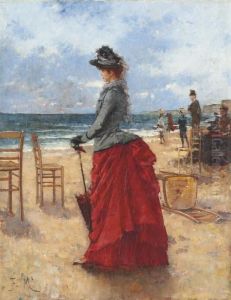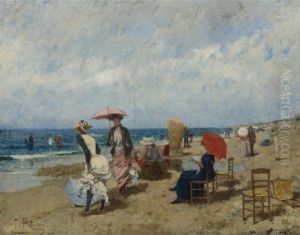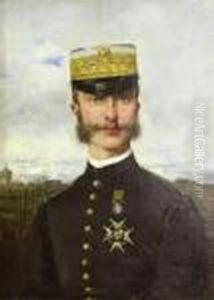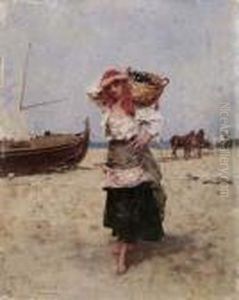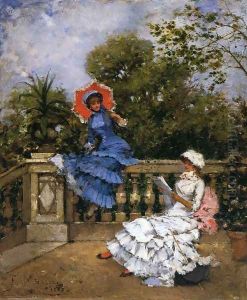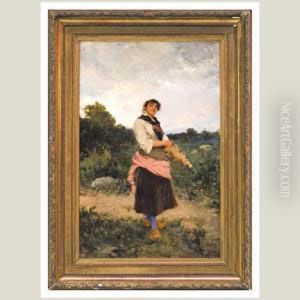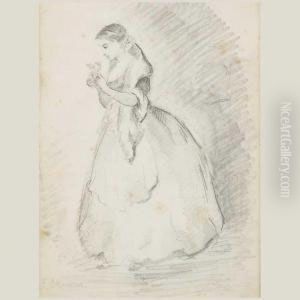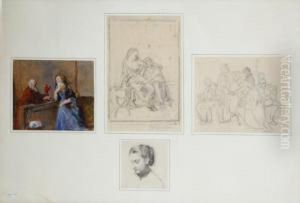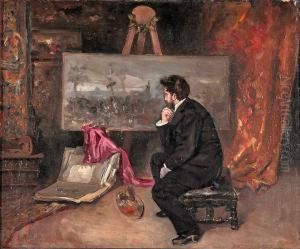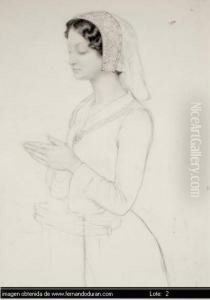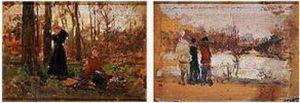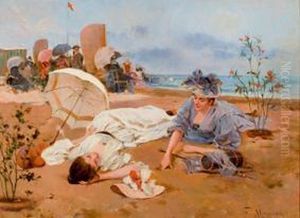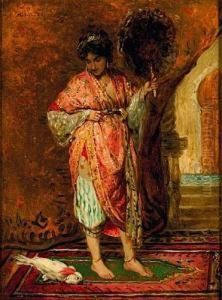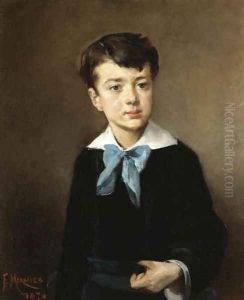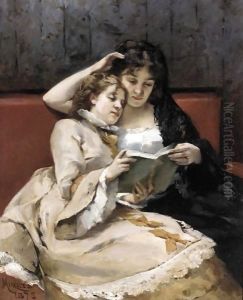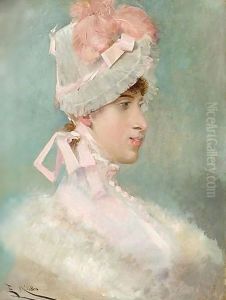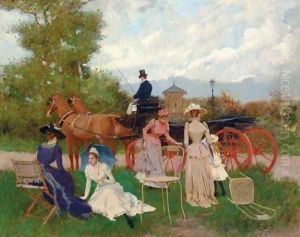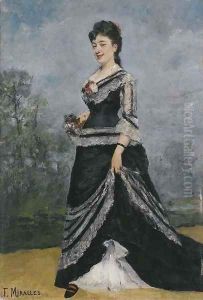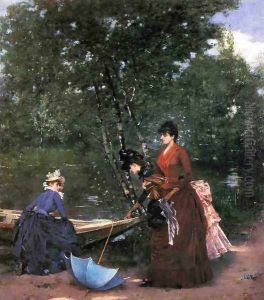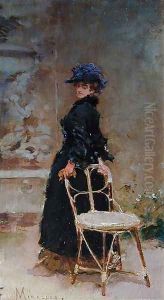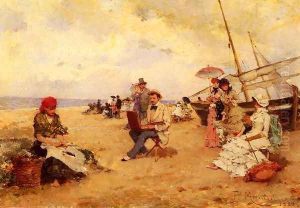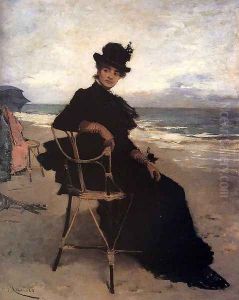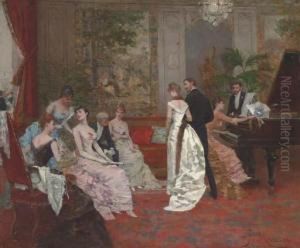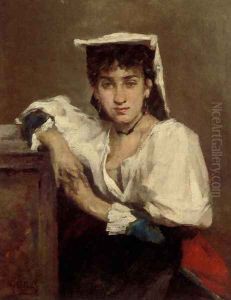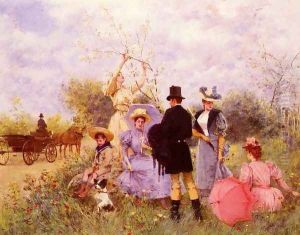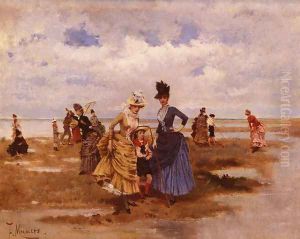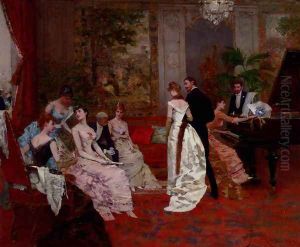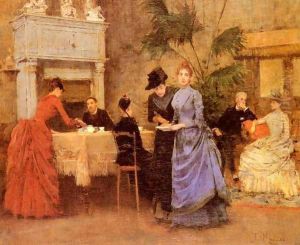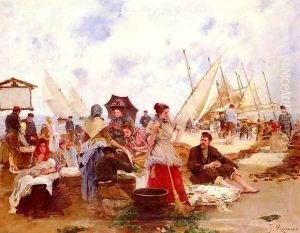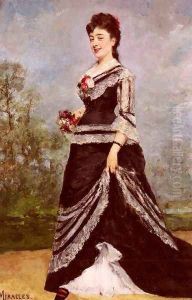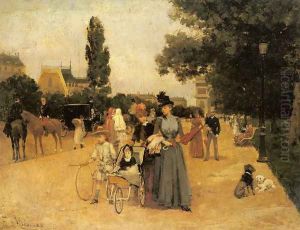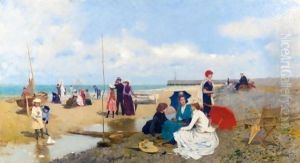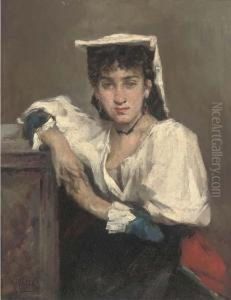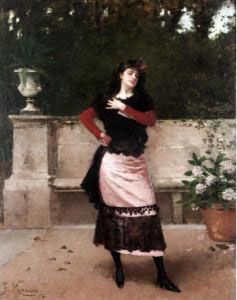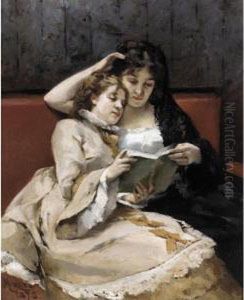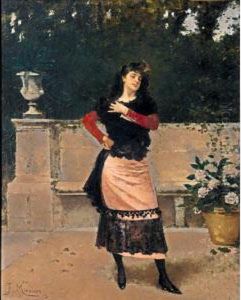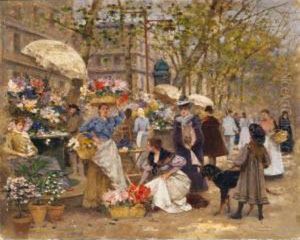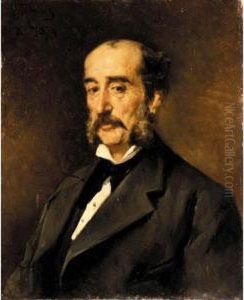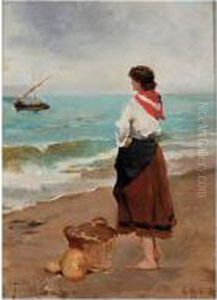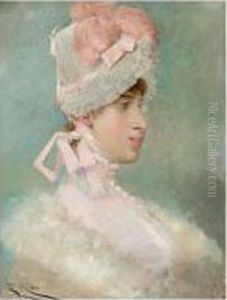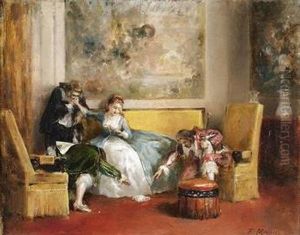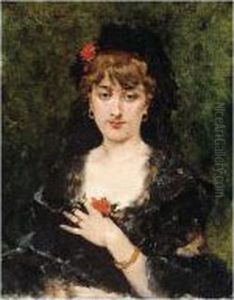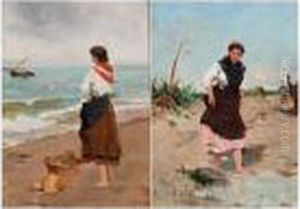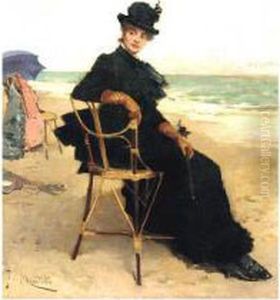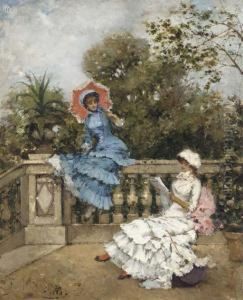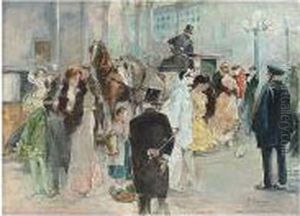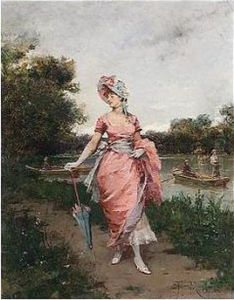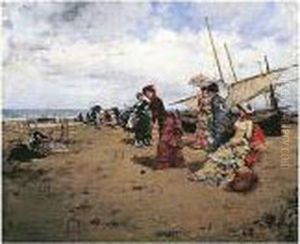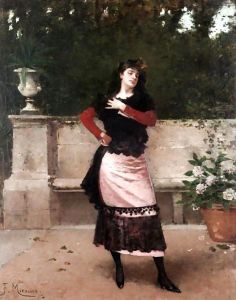Francisco Miralles Galup Paintings
Francisco Miralles Galup was a distinguished Spanish painter known for his elegant scenes of fashionable women and genre paintings depicting social life in late 19th century Paris. Born in Valencia, Spain, in 1848, Miralles showed an early talent for the arts. He received his initial training at the Real Academia de Bellas Artes de San Carlos in Valencia, where he honed his artistic skills.
In pursuit of broader artistic exposure, Miralles relocated to Paris, which was the epicenter of the art world at the time. He immersed himself in the vibrant cultural scene of Paris and was influenced by French painting styles, including Impressionism, although he did not fully adopt this style. Instead, Miralles developed his own unique approach that blended elements of his Spanish heritage with the contemporary Parisian aesthetic.
Throughout his career, Miralles exhibited his work in many important venues. He participated in the National Exhibition of Fine Arts in Spain and had his paintings shown in the Paris Salon, an annual exhibition that was the official art event of the Académie des Beaux-Arts in Paris. His works were well-received, and he gained recognition for his ability to capture the nuances of light and the textures of fabrics, which added a lifelike quality to his paintings.
Miralles' genre scenes often depicted women in leisurely activities, set against the backdrop of lush interiors or serene garden landscapes. He had a keen eye for detail and an ability to convey the opulence of the era through his work. His paintings also reflected the societal changes of the time, as the role and status of women were undergoing transformation.
Francisco Miralles Galup's artistic legacy includes a body of work that provides insight into the lifestyle and fashion of the late 19th century. His contribution to Spanish painting is significant, as he brought back influences from his time in Paris and contributed to the cultural exchange between Spain and France during a period of rich artistic development. Miralles passed away in 1901, leaving behind a legacy that continues to be appreciated by art historians and collectors alike.
